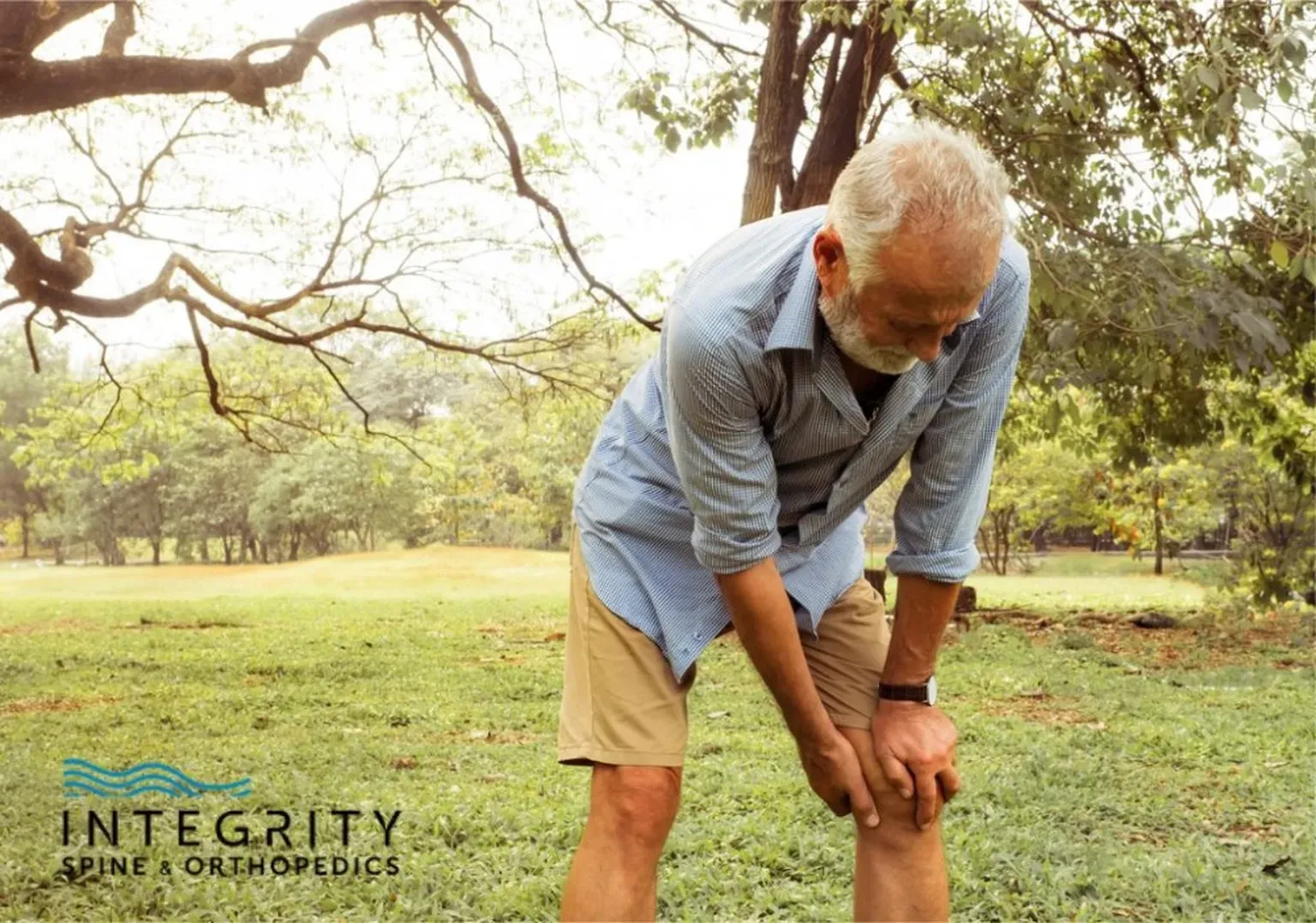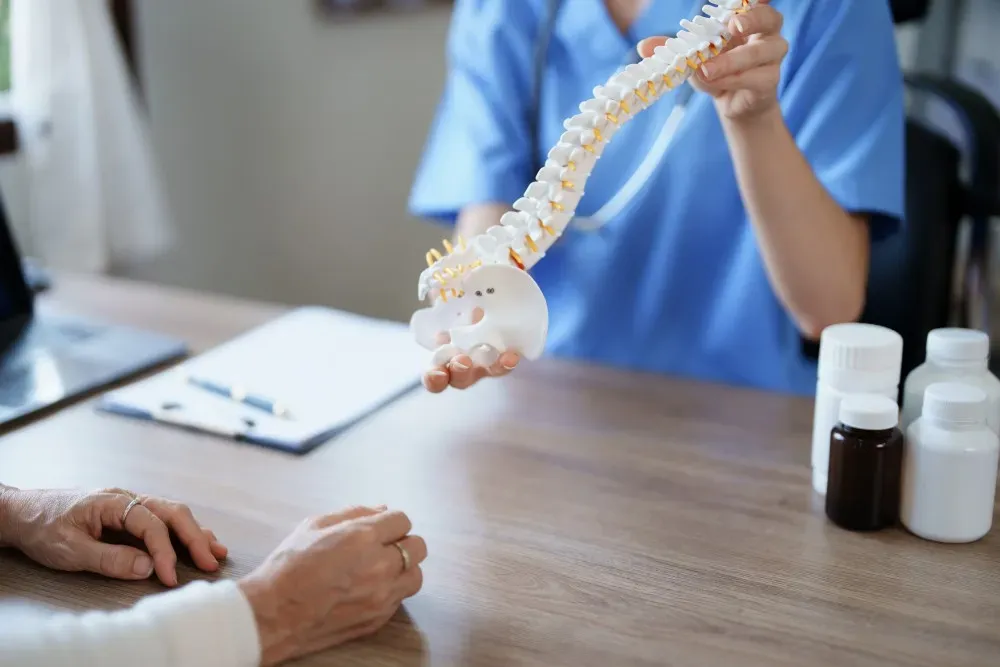Neurosurgery & Orthopedic Surgeons in Jacksonville

What is Degenerative Joint Disease?
Degenerative joint disease (DJD) goes by several different names, including osteoarthritis, degenerative arthritis, and wear and tear arthritis. It’s a common form of arthritis that affects over 32.5 million adults in the U.S.
What Is Degenerative Joint Disease?
Degenerative joint disease (DJD) goes by several different names, including osteoarthritis, degenerative arthritis, and wear and tear arthritis. It’s a common form of arthritis that affects over 32.5 million adults in the U.S.
DJD occurs in the joints, the places where 2 bones meet. With age, the structures that make up the joints begin to weaken and deteriorate, which can cause significant pain and loss of mobility. Degenerative joint disease is irreversible and incurable right now, but there are treatment options available to help control symptoms and slow the progression of the disease. Keep reading to learn more.
INTRODUCTION TO OSTEOARTHRITIS
Osteoarthritis is the most common form of arthritis. It’s a degenerative disease that develops when the tough, smooth cartilage that covers the ends of bones begins to wear away. Cartilage provides cushioning and shock-absorbing support for your joints and allows them to move flexibly and without friction. As the cartilage begins to break down, the bones of the joint rub together, causing pain, swelling, inflammation and irritation. Bone-on-bone friction also limits the movement of joints.
Over time, osteoarthritis causes progressive structural damage to the entire joint. It damages the connective ligaments, tendons and underlying bone. It can also cause inflammation in the tissue that lines the inside of joints. While any joint can develop DJD, it most commonly affects the hands, hips, knees and spine. The hips, knees and spine are at the highest risk of developing DJD because these joints bear the most weight in the body.
WHAT CAUSES DJD?
Osteoarthritis is a wear and tear disease. Typically, there’s not a single incident or injury that causes degeneration; instead, cartilage begins to break down after years of minor, repetitive stresses on the joint. Age is the biggest risk factor for developing osteoarthritis.
Other risk factors that might contribute to the development of osteoarthritis include:
- Obesity
- A history of joint injury
- A history of working in a physically demanding job or performing high-impact activities, like running or playing contact sports
- Genetics
SIGNS AND SYMPTOMS
Symptoms may be mild at first but worsen over time as joint damage progresses. You may experience the following:
- Joint pain with movement
- Stiffness, especially early in the morning and after periods of inactivity
- Swelling
- Redness and warmth
- Tenderness
- Loss of joint flexibility and range of motion
- Noise (popping, cracking, grating) with movement
As osteoarthritis progresses, symptoms can affect your mobility and quality of life. If you have degeneration in the knees, hips or spine, it may become difficult and painful to stand, walk, climb stairs and sit up straight. If you have degeneration in the hands or shoulders, it may become difficult to write, groom, lift objects and carry bags.
DIAGNOSIS
At your doctor’s appointment, your doctor will take down your medical history and ask you about your symptoms. He or she will perform a physical exam to identify areas of swelling or tenderness and to test your joints for flexibility and range of motion. You’ll undergo imaging exams like an X-ray or MRI so your doctor can look for early indications of osteoarthritis — like the presence of bone spurs or joint space narrowing.
Your doctor may also perform a minimally invasive arthroscopy to visualize cartilage loss and damage within the joint. During arthroscopy, your doctor will make a small incision over your joint and insert an endoscope, a small tool that captures high-resolution images of your internal structures.
TREATMENT OPTIONS
The damage caused by degenerative joint disease can’t be reversed. But conservative treatments can help you manage pain, improve mobility and slow the progression of disease. Your doctor may recommend the following:
1.) Medications. Painkillers like over-the-counter acetaminophen can help reduce joint pain. Over-the-counter NSAIDs can help ease both pain and inflammation. If you’re having uncontrollable pain, your doctor may prescribe stronger painkillers or anti-inflammatory medications.
2.) Cortisone injections. Cortisone injections are given directly into the painful joint. They are a temporary measure to reduce pain, inflammation and irritation, and the effects will wear off over time. In large amounts, corticosteroids have significant side effects and you’ll be limited to how many cortisone shots you can receive.
3.) Physical therapy. Physical therapy exercises can help you improve joint flexibility and mobility. Exercises will also help you strengthen the muscles that surround and protect the joints.
4.) Assistive devices. Use assistive devices as needed to help reduce pressure on your joints. Devices may include braces, walkers, canes, shower chairs, shoe inserts or large-grip utensils and grooming tools.
If you have significant pain or loss of function that can’t be managed with conservative treatments, surgery may be an option to relieve pain and improve mobility. Today, many surgeries to repair or replace joints can be performed as minimally invasive procedures with fewer risk than open surgeries.
OUTLOOK AND LIFESTYLE CHANGES
DJD is a long-term condition that doesn’t have a cure. However, there are things you can do at home to protect your joints and slow the rate of degeneration.
- Maintain a healthy weight. Obesity may speed up joint degeneration — especially in weight-bearing joints like the hips and knees — because excess weight puts more stress and pressure on the joints. Follow a healthy diet and incorporate exercise into your routine to lose extra pounds and find a stable weight.
- Exercise regularly. Regular exercise keeps your joints, muscles and bones healthy, flexible and strong. There are several low-impact exercises you can engage in to stay active while reducing stress on the joints. Options include walking, bicycling, swimming and water aerobics.
- Be mindful. Be mindful of the stress you’re placing on your joints. Practice good posture while walking, standing and sitting. Wear properly fitted shoes with good support to reduce pressure on the feet, knees, hips and back when you walk. If you have a physically demanding job or lift weights for exercise, learn proper lifting techniques for heavy loads. If you’re experiencing pain, take care of yourself by resting or using assistive devices for activities.
INTEGRITY SPINE AND ORTHOPEDICS TREATS SPINE AND JOINT CONDITIONS
Integrity Spine and Orthopedics offers several treatment options for a wide range of spine, joint and musculoskeletal conditions. Our board-certified team of doctors is trained in orthopedic care and pain management for acute and chronic pain or injuries. If you’re in pain and experiencing a loss of mobility and independence due to arthritis, please contact us. Call 904-456-0017 or send us your contact information online to schedule an appointment.




